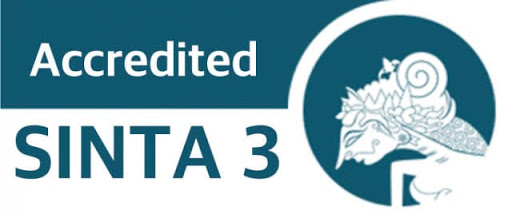Tarekat Tījānīyah di Banjarmasin, Kalimantan Selatan: Perkembangan, Genealogi, dan Jaringan
DOI:
https://doi.org/10.18592/jiiu.v23i2.13741Abstract
The Tījānīyah is one of ṣūfī orders (tarekat, tharīqah) that developed in South Kalimantan, Indonesia. Even though its teachings has been ever considered controversial in Indonesia, it has arised, even developed in Banjarese society which was dominated by other sufi orders which generally had different doctrines from it, such as the Naqsyabandīyah and the Sammānīyah. In fact, network is one factor that plays an important role in that context. This article aims to explain why this sufi order, focusing on that is located in Banjarmasin, was able to develop in this region by tracing its historical development, teacher-student genealogy, and networks, both global, national and regional networks in South Kalimantan. This study is qualitative in nature and sourced from literature, both primary ones e.g. from documents and secondary ones taken from a number of books and articles. This article concludes that this sufi order has a genealogy that connects it to Sheikh Abū al-'Abbās Aḥmad ibn Muḥammad ibn al-Mukhtar who is known as Aḥmad al-Tijānī in the chain of his followers who connect with sheikhs in Indonesia. Genealogically, K.H. Ahmad Anshari, the founder of the sufi order in Banjarmasin, has a lineage from K.H. Badri Masduqi, then Sheikh Idrīs al-‘Irāqī, Sheikh Aḥmad Sukayrij al-Marākisyī, Sayyid al-Syarīf Aḥmad al-Badawali, Sheikh Ali al-Tamasini, ending with Sheikh Aḥmad al-Tījānī. Thus, its lineage comes from the East Java network. Its development on the island of Java itself began with the role of Sheikh ‘Alī ibn Abdullāh al-THayyib at the beginning of the 20th century AD (between 1918 and 1922 AD). Its development in East Java was due to the important role of K.H. Idris Masduqi who has a genealogical relationship, not only with sheikhs on the island of Java, but also with the Moroccan network, where it first spread, namely through Sheikh Idrīs al-Marzūqī.References
A. G., Muhaimin. Islam dalam Bingkai Budaya Lokal: Potret dari Cirebon. Jakarta: Logos Wacana Ilmu, 2002.
———. The Islamic Traditions of Cirebon: Ibadat and Adat Among Javanese Muslims. Canberra: ANU E Press, 2006.
Abun-Nasr, Jamil M. A History of the Maghrib in Islamic Period. Cambridge: Cambridge University Press, 1993.
Anwar, Saepul. “Tarekat Tijaniyah: Pengamalan Tarekat Tijaniyah di Pondok Pesantren Al-Falah Biru Garut.” Jurnal Kajian Pendidikan Agama-Ta’lim 5, no. 2 (2007).
Asmaran AS. “Tijaniyah, Tarekat.” Dalam Ensiklopedi Islam, disunting oleh Azyumardi Azra, Vol. VII. Jakarta: Ichtiar Baru van Hoeve, 1994.
Azra, Azyumardi. Jaringan Ulama Timur Tengah dan Kepulauan Nusantara Abad XVII dan XVIII. Bandung: Mizan, 1994.
Badruzzaman, Ikzan. Kekhalifahan Wilayah Syekh Badruzzaman. Garut: Zawiyah Thariqat Tijaniyah, 2007.
———. “Peran Tasawuf dalam Islamisasi Indonesia,” 2008. https://serbasejarah.files.wordpress.com/2010/02/peran-tarekat-dalam-islamisasi-indonesia.pdf.
———. “Proses Kelahiran Thariqat Tijaniyah.” Zawiyah Tarekat Tijaniyah - Garut (blog), 7 Maret 2008. https://tijaniyahgarut.wordpress.com/2008/03/07/proses-kelahiran-thariqat-tijaniyah/.
———. “Syekh Ahmad Al-Tijani.” Zawiyah Tarekat Tijaniyah - Garut (blog), 4 Maret 2008. https://tijaniyahgarut.wordpress.com/syekh-ahmad-al-tijani/.
Baldick, Julian. Islam Mistik: Mengantar Anda ke Dunia Tasawuf. Jakarta: Serambi Ilmu Semesta, 2002.
Geertz, Clifford. Islam Observed: Religious Development in Morocco and Indonesia. Chicago: Chicago University Press, 1971.
Gibb, H. A. R., dan J.H. Kramers, ed. “Shorter Encyclopaedia of Islam.” Leiden: E.J. Brill, 1961.
Margoliouth, D. S. “Tidjaniya.” Dalam First Encyclopaedia of Islam, disunting oleh M. Th. Houtsma, Vol. VIII. Leiden: E.J. Brill, 1987.
Nasution, Harun. “Ensiklopedi Islam Indonesia.” Vol. III. Jakarta: Djambatan, 2002.
Pijper, G. F. Fragmenta Islamica: Studien over het Islamisme in Nederlandsch-Indie. Leiden: E.J. Brill, 1934.
Saifullah. K.H. Badri Masduqi: Kiprah dan Keteladanan. Yogyakarta: Pustaka Pesantren, 2008.
Sjamsuddin, Helius. “Islam and Resistance in South and Central Kalimantan in the Nineteenth and Early Twentieth Centuries.” Dalam Islam in the Indonesian Social Context, disunting oleh M.C. Ricklefs. Annual Indonesian Lectures Series, No. 15, 1989.
Syafruddin. “Tarekat Tijaniyah,” 2011. http://adybudiman.blogdetik.com/2011/08/27/.
Syamsuri. “Tarekat Tijāniyah: Tarekat Eksklusif dan Kontroversial.” Dalam Mengenal dan Memahami Tarekat-tarekat Muktabarah di Indonesia, disunting oleh Sri Mulyati. Jakarta: Prenada Media Group, 2011.
Syarifuddin. “Terekat Tijaniyah di Kalimantan Selatan (Studi Sejarah dan Motivasi Masyarakat Masuk Tarekat).” Tesis, Program Pascasarjana IAIN Antasari Banjarmasin, 2003.
Tim Peneliti UIN Antasari. Unsur-unsur Islam dalam Sejarah Perang Banjar (1859-1905). Banjarmasin: Pusat Penelitian, 1994.
Van Bruinessen, Martin. Kitab Kuning, Pesantren, dan Tarekat: Tradisi-tradisi Islam di Indonesia. Bandung: Mizan, 1995.
———. “Tarekat and Tarekat Teachers in Madura.”. http://let.uu.nl/~martin.vanbruinessen/ personal/publications/Madureseulama.html.
———. Tarekat Naqsyabandiyyah di Indonesia. Bandung: Mizan, 1998.
Willis, John Ralph. “Tijānȋyah.” Dalam The Oxford Encyclopedia of the Modern Islamic World, disunting oleh John L. Esposito, Vol. IV. New York: Oxford University Press, 1995.
Downloads
Published
Issue
Section
License
Copyright (c) 2024 Jurnal Ilmiah Ilmu Ushuluddin

This work is licensed under a Creative Commons Attribution-ShareAlike 4.0 International License.
Authors who publish with this journal agree to the following terms:
- Authors retain copyright and grant the journal right of first publication with the work simultaneously licensed under a Creative Commons Attribution License that allows others to share the work with an acknowledgement of the work's authorship and initial publication in this journal.
- Authors are able to enter into separate, additional contractual arrangements for the non-exclusive distribution of the journal's published version of the work (e.g., post it to an institutional repository or publish it in a book), with an acknowledgement of its initial publication in this journal.
- Authors are permitted and encouraged to post their work online (e.g., in institutional repositories or on their website) prior to and during the submission process, as it can lead to productive exchanges, as well as earlier and greater citation of published work (See The Effect of Open Access).






